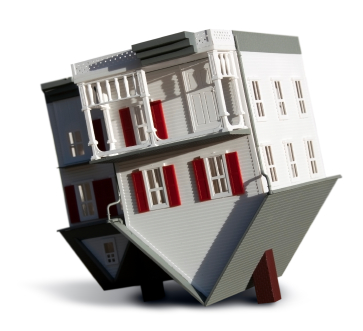How Does a Reverse Mortgage Work?
 For those over the age of 62, a reverse mortgage may be just what is needed to supplement income. Having part of the equity in their home available to pay bills and buy groceries can take away some of the worry about supporting themselves after retirement. But what is a reverse mortgage and how does it work? Following are some insights into a reverse mortgage.
For those over the age of 62, a reverse mortgage may be just what is needed to supplement income. Having part of the equity in their home available to pay bills and buy groceries can take away some of the worry about supporting themselves after retirement. But what is a reverse mortgage and how does it work? Following are some insights into a reverse mortgage.
What Is a Reverse Mortgage?
Basically, a reverse mortgage is a type of loan where a homeowner is eligible to receive a portion of the value of their property over and above what is owed on it. A reverse mortgage is also available if you own your home outright, but still plan to live there. There are a couple of stipulations involved. First the person must be aged 62 or older to qualify. Second, the value of the property must exceed the amount owed.
How a Reverse Mortgage Works
If the property is worth more than the outstanding debt the owner can essentially borrow against the worth of the property. It is a bit different than a traditional home equity loan in that with a reverse mortgage the homeowner won’t have to repay the loan for as long as they’re alive, providing the property remains theirs and it is their principal dwelling place, or they are not away from it for more than 364 consecutive days. If these criteria are met, the loan isn’t collectible until after the homeowner passes away or if they sell the property.
No Monthly Payments
Part of the beauty of a reverse mortgage is that there are no monthly payments involved. Instead, the homeowner receives money. They can accept an amount agreed upon by a lending institution that is equal to a portion of the equity in their home. This can be in the form of either a lump sum, or they can receive monthly installments. That’s how reverse mortgages work – instead of making payments, the property owner receives money that can be used at their discretion.
Peace of Mind
Frequently, a reverse mortgage is used as supplemental income after a person retires. Instead of having to live on their Social Security check alone they can take advantage of the equity in their home that’s been built up over years of making monthly mortgage payments. It offers the property owner the peace of mind knowing they’ll have adequate funds available for their everyday needs.
Advantages of a Reverse Mortgage
One of the principal advantages of a reverse mortgage is that a property owner’s credit isn’t taken into consideration when getting the reverse mortgage. How does a reverse mortgage work in that respect? Because the person that is borrowing the money is not going to be required to make payments, there is no need for a credit check. In fact, in a lot of cases the lending institution doesn’t even bother doing a credit check, because there’s no reason to go to the added expense and trouble of doing so. They know they’ll be getting their money back if the property is sold or if the homeowner passes away. Because they have a lien on the property, they’re assured they’ll be paid back.
Disadvantages of a Reverse Mortgage
Among the reasons some people don’t like a reverse mortgage is the fact that the equity in a home decreases as the reverse mortgage money is received. There are certain qualifications concerning upkeep that must be met by the home owner, such as making sure the property is properly maintained, and that it is adequately insured.
Do Your Homework
Over all the decision on whether or not to take out a reverse mortgage should be studied ahead of time. There are valid arguments on both sides of the fence. Do your homework. Weigh the pros and cons and then make an informed decision on whether a reverse mortgage is in your best interest. Consulting a tax attorney or an accountant may help you make up your mind.






One Comment